Themed collection Biomedical Raman Imaging

Themed collection: Biomedical Raman Imaging
Katsumasa Fujita, Paola Borri and Wei Min introduce this Analyst themed issue on Biomedical Raman Imaging.

Analyst, 2022,147, 4948-4948
https://doi.org/10.1039/D2AN90065C
Recent advances in the use of stimulated Raman scattering in histopathology
Stimulated Raman histopathology with computer aided diagnosis.
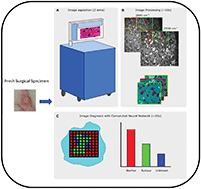
Analyst, 2021,146, 789-802
https://doi.org/10.1039/D0AN01972K
Raman microscopy for skin evaluation
The applications of Raman microscopies, such as spontaneous Raman scattering microscopy and coherent Raman scattering microscopy, used to evaluate skin and research trends are presented.

Analyst, 2021,146, 1142-1150
https://doi.org/10.1039/D0AN02039G
Translational biophotonics with Raman imaging: clinical applications and beyond
The technological developments of high-speed spontaneous and coherent Raman scattering based imaging for translational applications including surgical guidance, histopathology, and pathophysiological monitoring.
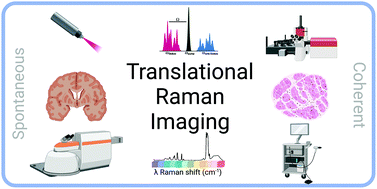
Analyst, 2021,146, 6379-6393
https://doi.org/10.1039/D1AN00954K
Selective-sampling Raman imaging techniques for ex vivo assessment of surgical margins in cancer surgery
Selective-sampling Raman Imaging enables intraoperative assessment of excised surgical margins in cancer surgery, a review.

Analyst, 2021,146, 3799-3809
https://doi.org/10.1039/D1AN00296A
Visualizing intra-medulla lipids in human hair using ultra-multiplex CARS, SHG, and THG microscopy
We performed label-free imaging of human-hair medulla using multi-modal nonlinear optical microscopy.
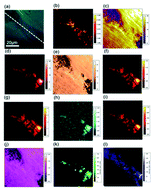
Analyst, 2021,146, 1163-1168
https://doi.org/10.1039/D0AN01880E
DO-SRS imaging of metabolic dynamics in aging Drosophila
Emerging studies have shown that lipid metabolism plays an important role in aging.
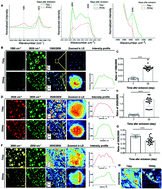
Analyst, 2021,146, 7510-7519
https://doi.org/10.1039/D1AN01638E
High spatial-resolution imaging of label-free in vivo protein aggregates by VISTA
High spatial-resolution label-free imaging of in vivo protein aggregates by VISTA for studying the details of amyloid-β plaque morphologies was achieved. Highly multiplex volumetric imaging was achieved by coupling VISTA imaging with U-net feature prediction.
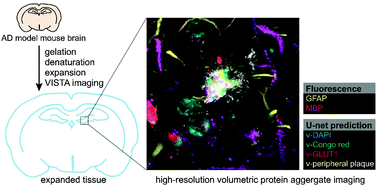
Analyst, 2021,146, 4135-4145
https://doi.org/10.1039/D1AN00060H
Detecting nitrile-containing small molecules by infrared photothermal microscopy
We demonstrated IR photothermal imaging of trifluoromethoxy carbonyl cyanide phenylhydrazone (FCCP) in cells. The result indicates that a nitrile group can be used as a vibrational tag to image target molecules.
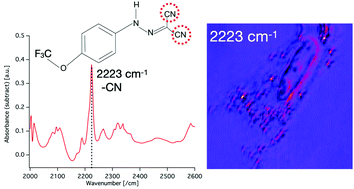
Analyst, 2021,146, 2307-2312
https://doi.org/10.1039/D0AN02198A
Identifying subpopulations in multicellular systems by quantitative chemical imaging using label-free hyperspectral CARS microscopy
Quantitative hyperspectral coherent Raman scattering microscopy merges imaging with spectroscopy and utilises quantitative data analysis algorithms to extract chemical components, spectrally and spatially-resolved, with sub-cellular resolution.
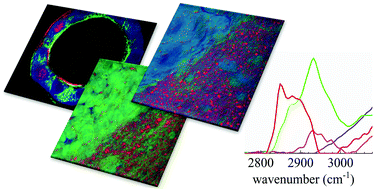
Analyst, 2021,146, 2277-2291
https://doi.org/10.1039/D0AN02381G
Multicolour chemical imaging of plant tissues with hyperspectral stimulated Raman scattering microscopy
Stimulated Raman scattering microscopy allows for multicolour label-free chemical imaging of plant tissues.
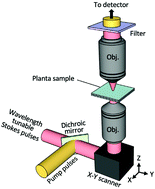
Analyst, 2021,146, 1234-1238
https://doi.org/10.1039/D0AN02181D
Label-free Raman mapping of saturated and unsaturated fatty acid uptake, storage, and return toward baseline levels in macrophages
We use Raman imaging and analysis to evaluate the effects of different fatty acids following their uptake in macrophages, evaluating the fatty acid dynamics, endogenous cellular behavior and metabolism.
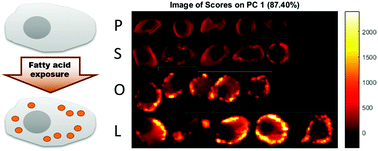
Analyst, 2021,146, 1268-1280
https://doi.org/10.1039/D0AN02077J
Coherent anti-Stokes Raman scattering imaging of microcalcifications associated with breast cancer
Chemical imaging of calcifications was demonstrated in the depth of a tissue.
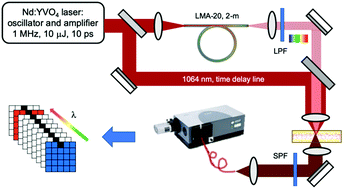
Analyst, 2021,146, 1253-1259
https://doi.org/10.1039/D0AN01962C
Self-absorption corrected non-invasive transmission Raman spectroscopy (of biological tissue)
Higher contrast of subsurface Raman spectra is achievable with self-absorption corrected transmission Raman spectroscopy. (Desired signal in red, interfering matrix artefacts in blue.)
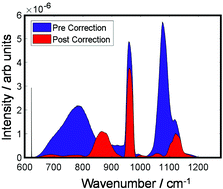
Analyst, 2021,146, 1260-1267
https://doi.org/10.1039/D0AN01940B
Nondestructive molecular imaging by Raman spectroscopy vs. marker detection by MALDI IMS for an early diagnosis of HCC
Hepatocellular carcinoma (HCC) is a leading cause of cancer-related deaths worldwide with a steadily increasing mortality rate.
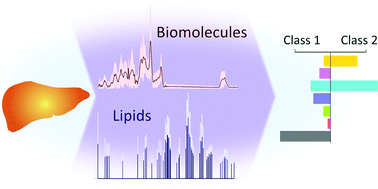
Analyst, 2021,146, 1239-1252
https://doi.org/10.1039/D0AN01555E
Non-invasive depth determination of inclusion in biological tissues using spatially offset Raman spectroscopy with external calibration
Spatially Offset Raman Spectroscopy (SORS) allows chemical characterisation of biological tissues at depths enabling in vivo localization of biomarkers for early disease diagnosis.
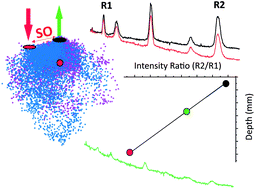
Analyst, 2020,145, 7623-7629
https://doi.org/10.1039/D0AN01292K
Characterisation of estrogen receptor alpha (ERα) expression in breast cancer cells and effect of drug treatment using targeted nanoparticles and SERS
Targeted nanoparticles combined with surface enhanced Raman scattering (SERS) are used to characterise the estrogen receptor alpha (ERα) expression levels in breast cancer cells and the effect that SERD drug treatment has on these expression levels.
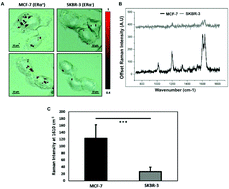
Analyst, 2020,145, 7225-7233
https://doi.org/10.1039/D0AN01532F
About this collection
Raman spectroscopy has offered the potential as an optical biomedical imaging technique for many years due to the high molecular specificity, but has suffered from lack of sensitivity and the time taken for the measurements. Recent advances in instrumentation and variants on the technique such as SRS and CARS have addressed some of the limitations of the technique for biomedical imaging. This collection highlights advances in Raman spectroscopy aimed at improving the biomedical imaging capabilities and utility.
This collection is guest edited by Paola Borri (Cardiff University, UK), Katsumasa Fujita (Osaka University, Japan) and
AnalystAdvisory Board Member Wei Min (Columbia University, USA).